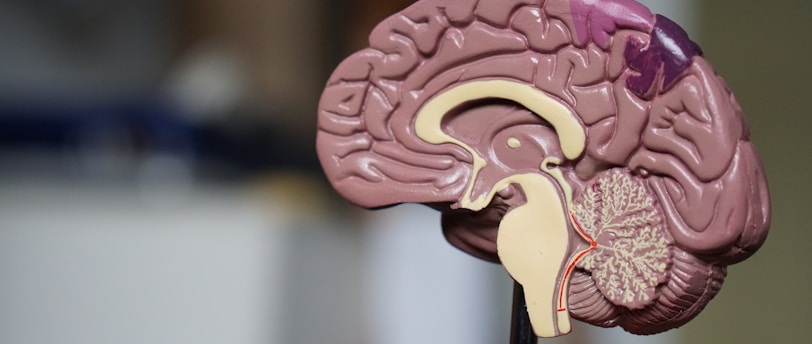The Neuroscience of Porn Addiction: How it Affects the Brain
Explore the fascinating field of neuroscience and learn how porn addiction impacts the brain. Gain insights into the effects and consequences of this addiction on mental health and well-being.


The Neuroscience of Porn Addiction: How it Affects the Brain
Over the past few decades, the accessibility and availability of pornography have increased exponentially, thanks to the internet. With just a few clicks, anyone can access a vast array of explicit content. While pornography itself is a controversial topic, there is growing concern about the potential addictive nature of porn and its impact on the brain.
Understanding Addiction
Before delving into the neuroscience of porn addiction, it is crucial to understand addiction itself. Addiction is a complex disorder that involves the compulsive use of a substance or engagement in a behavior, despite negative consequences. It is characterized by changes in the brain's reward and motivation systems.
When a person engages in activities that are pleasurable, such as eating delicious food or engaging in sexual activities, the brain releases dopamine, a neurotransmitter associated with pleasure and reward. This surge of dopamine reinforces the behavior, making it more likely to be repeated.
In the case of addiction, the brain's reward system becomes dysregulated. The repeated exposure to a rewarding stimulus, such as drugs or gambling, leads to changes in the brain's structure and function. Over time, the individual becomes less responsive to the pleasurable effects of the stimulus, leading to an increased need for more intense or frequent stimulation to achieve the same level of satisfaction.
The Brain and Porn Addiction
Research on the neuroscience of porn addiction is still in its early stages, but studies have begun to shed light on how pornography affects the brain. One study conducted by researchers at the Max Planck Institute for Human Development in Berlin used functional magnetic resonance imaging (fMRI) to examine the brain activity of individuals with compulsive sexual behavior while they viewed pornographic images.
The study found that individuals with compulsive sexual behavior showed increased activation in brain regions associated with reward processing, such as the ventral striatum and the orbitofrontal cortex. These brain regions are involved in the release of dopamine and the experience of pleasure. The findings suggest that the brains of individuals with porn addiction may be hypersensitive to sexual stimuli.
Another study published in the journal JAMA Psychiatry found that frequent porn use was associated with a decrease in gray matter volume in the striatum, a region of the brain involved in reward processing and habit formation. The researchers hypothesized that this decrease in gray matter may be a result of the brain's attempt to compensate for the overstimulation caused by excessive porn use.
The Role of Dopamine
Dopamine plays a crucial role in the development and maintenance of addiction. When a person engages in addictive behaviors, such as drug use or gambling, dopamine is released in large amounts, creating a pleasurable sensation. Over time, the brain becomes less responsive to dopamine, leading to a decrease in the pleasure experienced from the addictive behavior.
In the case of porn addiction, the constant exposure to sexual stimuli can lead to a desensitization of the brain's dopamine receptors. This desensitization can result in a decreased ability to experience pleasure from other activities and an increased need for more intense or novel sexual stimuli to achieve the same level of satisfaction.
The Impact on Relationships and Mental Health
Porn addiction can have significant consequences for both the individual and their relationships. Excessive porn use can lead to a decrease in sexual satisfaction with real-life partners, as the individual may become desensitized to the natural cues and stimuli associated with sexual intimacy.
Furthermore, porn addiction can contribute to feelings of shame, guilt, and low self-esteem. Individuals may experience difficulty forming and maintaining meaningful relationships, as their focus and energy are directed towards their addiction. This can lead to social isolation and a decline in overall mental well-being.
Treatment and Recovery
Recognizing and addressing porn addiction is essential for individuals seeking recovery. Treatment options for porn addiction are similar to those for other types of addiction and may include individual therapy, support groups, and behavioral interventions.
Cognitive-behavioral therapy (CBT) is often used to help individuals identify and modify the thoughts and behaviors that contribute to their addiction. CBT can help individuals develop healthier coping mechanisms and strategies to manage triggers and cravings.
In addition to therapy, support groups such as Sex Addicts Anonymous (SAA) or Porn Addicts Anonymous (PAA) can provide individuals with a safe and supportive environment to share their experiences and learn from others who have gone through similar struggles.
Conclusion
The neuroscience of porn addiction is a complex and evolving field of study. While research is still in its early stages, studies have shown that porn addiction can have a significant impact on the brain, particularly in the areas involved in reward processing and habit formation.
Understanding the neuroscience of porn addiction is crucial for developing effective prevention and treatment strategies. By recognizing the impact of porn addiction on the brain, individuals and healthcare professionals can work together to provide support and resources for those seeking recovery.


